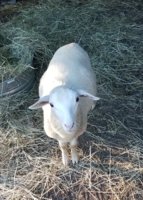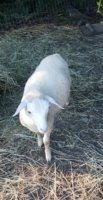Baymule
Herd Master
Anybody that has a queasy stomach ought not keep animals.Ever one to not like waste, I've noticed the chickens fight each other for the tapeworm segments in the poop (when they are not squabbling about the maggots from fly strike!)As sheep tapeworms don't have a secondary host in the chicken, I guess it's all just good protein to them........I hope I haven't put anybody off their breakfast eggs







